The clocks went back so Phoebe had a 25-hour birthday with red velvet cake and dim sum and first dibs on holding baby Theo who happily went full circle round the table from auntie to uncle to grandparent to parent like a very superior version of Pass the Parcel.
[‘Asters and Hydrangeas’ (undated) by Vanessa Bell]
I do my utmost to enjoy this time of year, having dreaded it for so long. After moving to Cambridge seven years ago, I did some amateur CBT on myself and persuaded myself there are things to love about the season with its shorter days, colder weather, gloom and greyness. But it does require a few tricks, and in order for them to work, I find I need to feel Bloomsburyish.
I’m not an out-and-out fan of the Bloomsbury group and I have more than a few quibbles with the cult of Bloomsbury, but there’s something about it all which appeals at this time of year. It’s a lot to do with the idea of brisk walks over the Sussex Downs or across London, warm fires, good books, colourful interiors, a daily timetable of structured bohemianism, and a lot of hard work punctuated with tea and muffins.
This is one of my all-time favourite photos, which I like to think was taken somewhere like High Holborn. I search for it every November, and imagine walking at dusk through wet Bloomsbury squares with the lights coming on in the tall windows of the wonderful early C19 terraces, and dropping into a favourite bookseller (no Waterstones in this fantasy). In the past I would have made my way to Lamb’s Conduit Street to the Persephone Books shop, which I always thought was at its cosiest, Bloomsbury best on late November afternoons as the light outside faded and the lamps inside were lit.
I also reread Virginia Woolf’s ‘Street Haunting: A London Adventure’ (1930), an account of going out between four and six pm, ostensibly to buy a pencil but in reality to be an archetypal flâneuse and to “indulge safely in the greatest pleasure of town life in winter--rambling the streets of London”.
[‘Reading by Lamplight (Twilight: Interior)’ (1909) by George Clausen]
The essay also includes a wonderful section on second-hand bookshops, and this really is the season for new books, as Mrs Miniver knows in the eponymous book which has one of the most perfect openings ever. It always makes me want to come home at dusk with a “sheaf of chrysanthemums…the big mop-headed kind, burgundy-coloured, with curled petals” to a tea of “honey sandwiches, brandy-snaps, and small ratafia biscuits…and crumpets'“ and the pleasure of three new, virginal library books with “their bright paper wrappers unsullied by subscriber's hand”. You can see how enjoyable this form of seasonal CBT can be.
[‘Tea Things’ (1919) by Vanessa Bell]
In fact, I lean quite heavily on Virginia Woolf at this time of year, and her diaries are another of my autumn tricks. (I have old secondhand copies of the five volumes edited by Olivier Bell which have recently been reissued but at a price). I read all of her October and November entries over the years and am transported, for example to a late afternoon in Richmond: “A very cold day…no leaves to speak of left on the trees now; a sharp chill in the air. One’s room after tea emphatically a little centre of light in the midst of profound darkness” (13 Nov 1917). Or I take the Tube with Woolf to go to tea in Hampstead (this phrase alone works wonders) as she did on 24 October 1917: “…it was heavy rain, cold, dark, inhuman, primeval weather. The [Janet] Case ménage is extremely cheerful to step into; such a welcome, such anxiety about China tea or Indian, an egg, fresh bread & butter”. As if by magic, any feelings of autumnal melancholy melt away.
[‘Still-life of Dahlias, Chrysanthemums and Begonias’ (1912) by Vanessa Bell]
Vanessa Bell helps, too. We went to the Vanessa Bell exhibition in Milton Keynes last week and I revelled in the rich colours, flowers, needlepoint, book covers, painted furniture, and the gloriously unabashed focus on the domestic. This painting is in the exhibition (Vanessa kept it until her death and it hung for a long time in 46 Gordon Square) and it’s easy to see how Virgina could write on Saturday 10 November 1917 that her sister’s “pictures glimmered through the dusk” at the Omega exhibition. (She also bought “an apricot coloured coat on the way out”, something I feel is worth emulating.)
I came away from the exhibition happy to see this season as one for enjoying making things, knitting little hats and socks for Theo, listening to the radio (good recent episodes of Front Row), making plans for reading and quilts, working out planting times for amaryllis and tulip bulbs, and wandering or cycling round Cambridge at dusk. Because Cambridge is one of the major Bloomsbury locations outside London.
[Mural (1920) for JM Keynes’ rooms in King’s College by Bell and Grant - the eight studies for this are in the MK exhibition]
Indeed, all the male members of the group except Duncan Grant studied at just two Cambridge colleges (King’s and Trinity) viz., Leonard Woolf, Clive Bell, Thoby & Adrian Stephen, JM Keynes, Roger Fry, Desmond MacCarthy, Saxon Sydney-Turner, EM Forster, and so on to the next generation. Not that this in itself is necessarily a good thing, as Virginia Woolf made so very clear in 1928 in her two lectures at Girton to “starved but valiant young women” (27 Oct 1928), the texts of which formed the basis of A Room of One’s Own. But the spirit of Bloomsbury intellectual enquiry still pervades the concentrated conglomeration of colleges and narrow medieval streets.
I also have my own, still vivid memories of the academic sort which laid the foundations of an appreciation of twilight and dusk (which was then lost for so many years).
We read this, by DH Lawrence, and it immediately conjured up a powerful set of images which have lasted intact through the years. It must have been November and the last lesson of the day, because it was all of a piece with the light and warmth inside the classroom and the dripping greyness outside.
[‘Bailey Bridge, Manchester’ (1912) by Adolphe Valette]
And then I would have caught the brightly lit and misted-up bus home through the Manchester dusk with its echoes of Adolphe Valette’s paintings.
[‘L’Angélus’ (c1857-59) by J-F Millet]
I also remember all the details of a cold, darkening November afternoon in the warm school library when I sat the Oxford entrance exam. We had to translate from the French a description of Millet’s painting, which was something of a challenge as I had no idea what the Angelus was/is or what the painting looked like. To be fair, I imagine very few candidates did, so I can’t ascribe my failure to this. But when I saw the actual painting in the Musée d’Orsay, I loved it, and still do. It now helps me reframe the similarly bitterly cold, flat, bleak winter landscape of the wide open Fens which surround Cambridge (it hasn’t changed in centuries) into something transcendent and timeless.
Now is also the time to line up some films to watch in the evenings, and this is where I depart from Bloomsbury. I want to see Joy and Paddington in Peru (I don’t care if the younger Brockets laugh at my penchant for the Paddington films),
[Paris, 1964, Brian Epstein sandwiched between ‘the boys’ as he called them]
and I’ve just watched Midas Man which did its best with a rather wooden telling of the Brian Epstein story, but had none of the Beatles energy or music which so captivated him.
Nevertheless, just writing this in intervals between cycling past King’s College and walking to the beautifully ragged allotments with patches of dark cavolo nero and late tawny nasturtiums is not just therapeutic but also a reminder that it helps to be more Bloomsbury every autumn.
Happy Sunday!
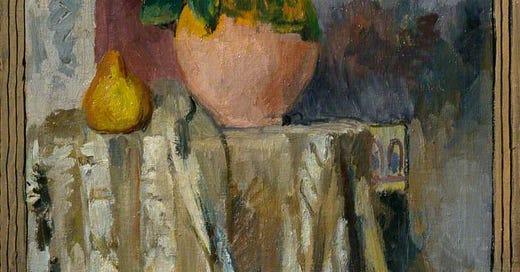



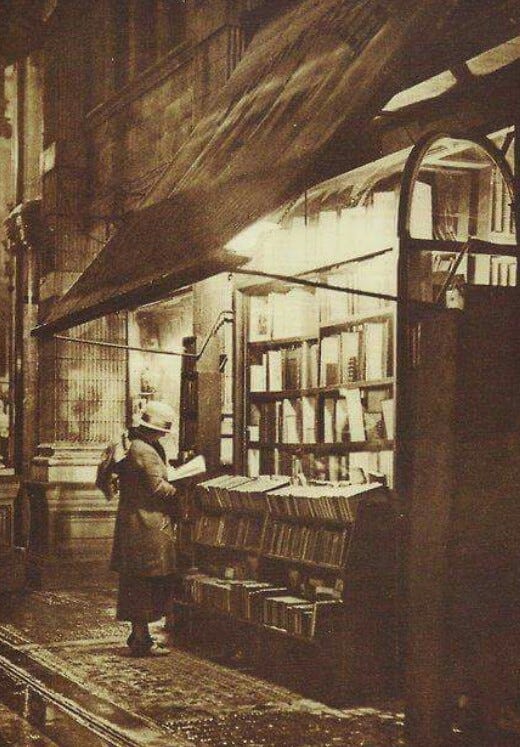

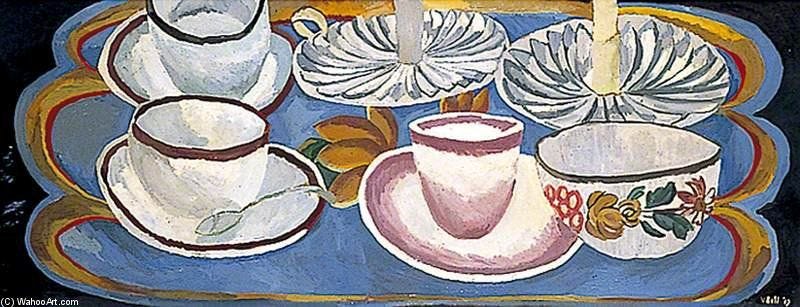

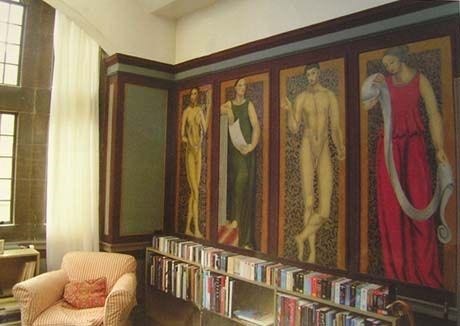

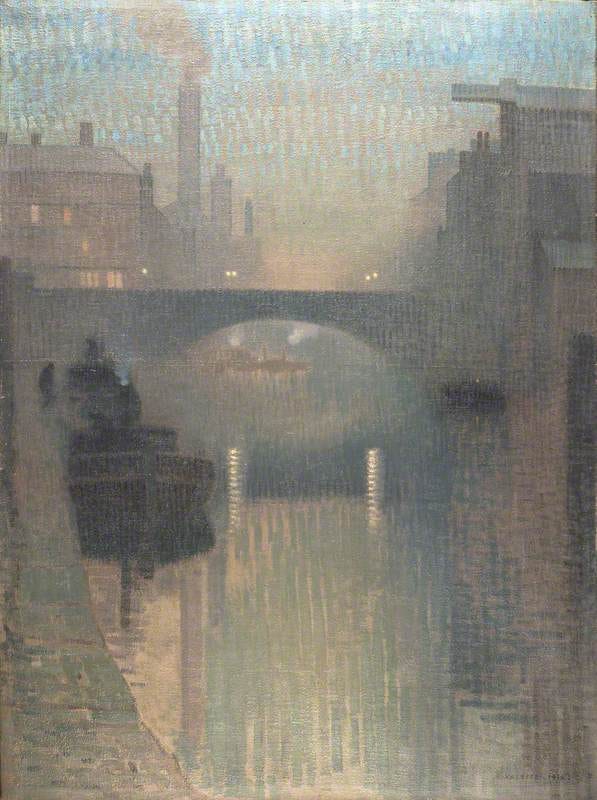
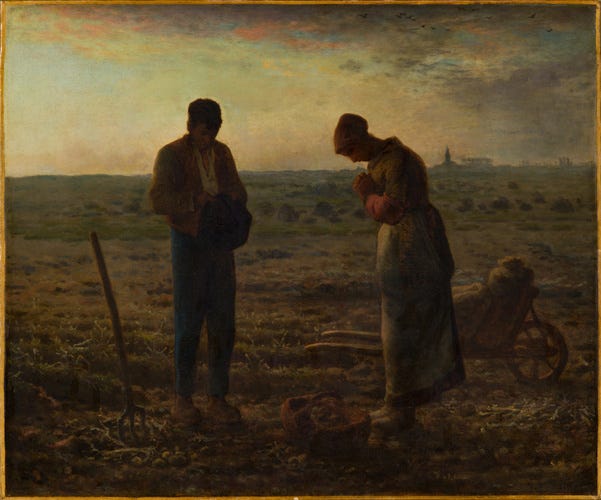
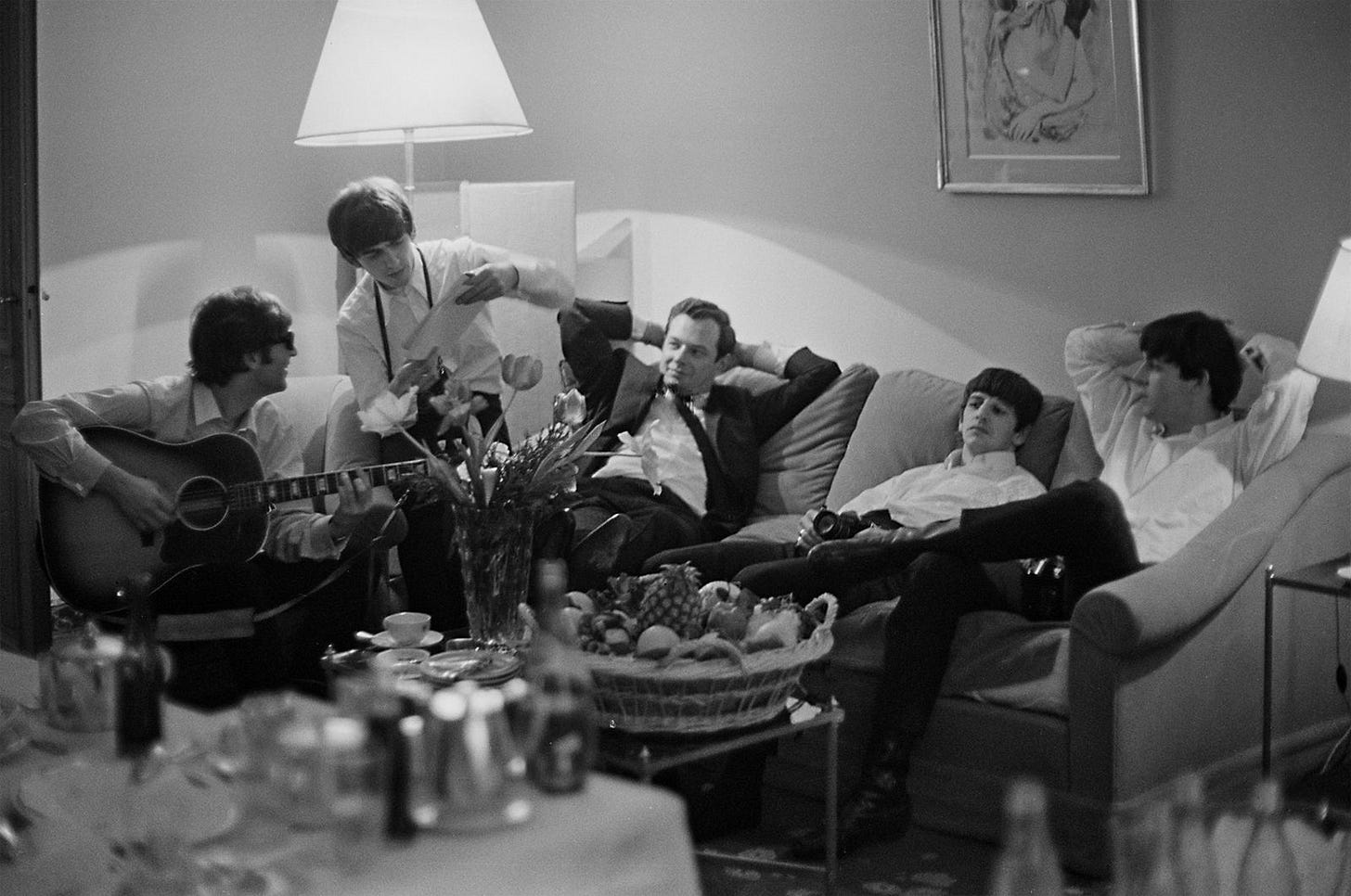
Gosh Jane, what a wonderful piece to wake up to this morning. A transport of delights, just magical. And those beautiful artworks, which take ones breath away. I have been on a journey this morning, one I will ponder on throughout this autumnal day, and I thank you for sharing your recollections and thoughts with us. We are truly blessed. Happy Sunday to all
You write such good stuff Jane. I’ll try to be more Bloomsbury, although I’m next door to Haworth, so there’s a Brontë feeling here. Not the same thing!